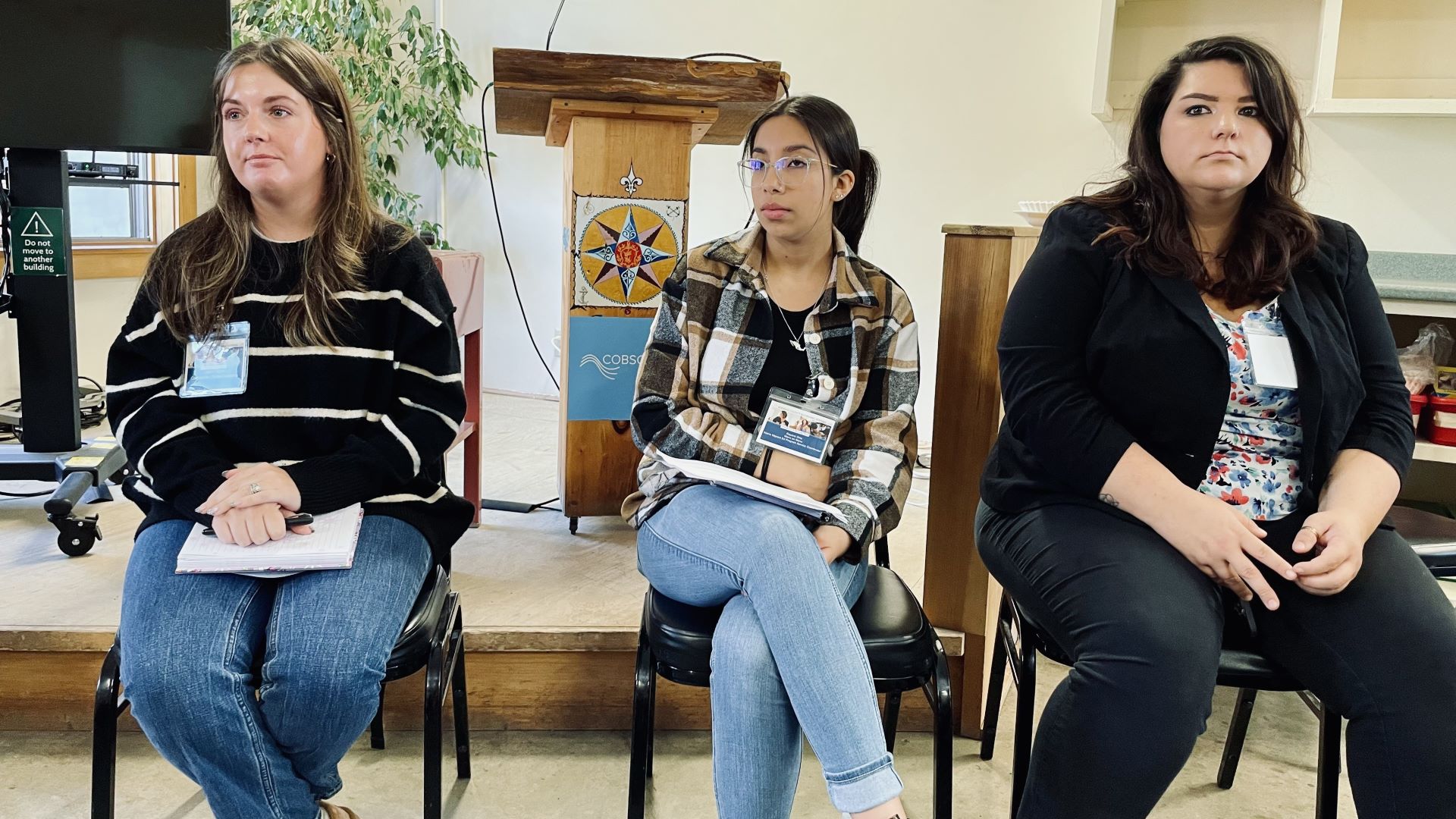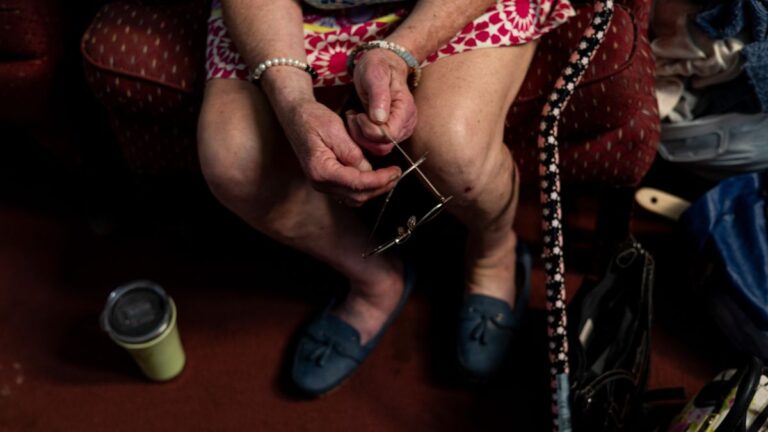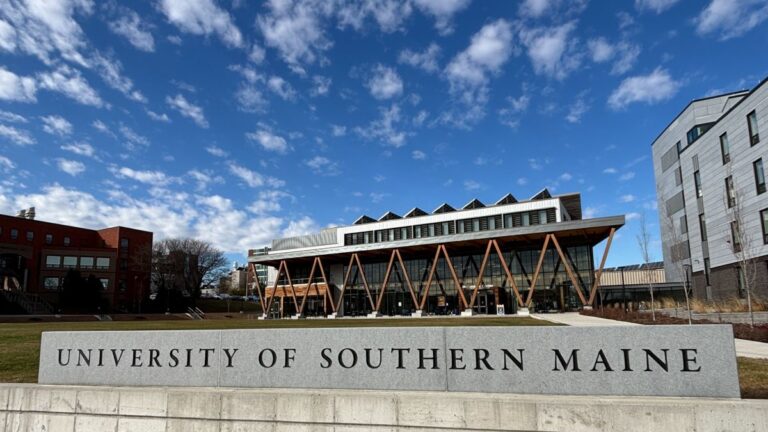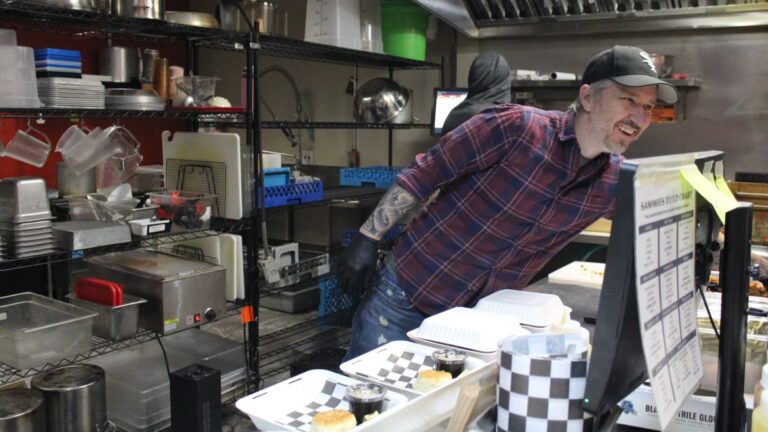At the Washington County Economic Summit this week, four chairs were lined up at the front of the conference room for the four young women scheduled to participate in a discussion about the struggles facing young people trying to stay in Downeast Maine.
But one chair was empty. The panelist had to cancel — because she was busy moving.
“The long and the short of it is she had student loans, she couldn’t find a good job here, and she couldn’t find housing she could afford,” said the panel moderator, Tanya Rucosky. “It’s just heartbreaking because she’s a wonderful, smart person and she would have been a great asset to our community.”
The Sunrise County Economic Council (SCEC) organized the day-long summit at the Cobscook Institute in Trescott with several panel talks focusing on issues affecting the county’s long-term prosperity. But a focus of the discussions was how to not only keep young adults from moving away, but keep them working and thriving in remote rural communities.
Despite describing Washington County as being “hollowed out” by an exodus of young adults to more prosperous urban areas, summit presenters said surveys show 23 percent of millennials say they want to live in small towns and rural areas.
But a host of challenges throw up roadblocks, including inadequate child care; lack of affordable housing; a scarcity of living wage jobs; a dearth of entertainment; and persistent substance abuse.
Dozens of community leaders and residents, and several high school students, gathered to learn what’s being done to grapple with those challenges.
As Rucosky was explaining the reasons for her missing panelist, the other three young women nodded their heads, immediately recognizing the all-too-familiar story.
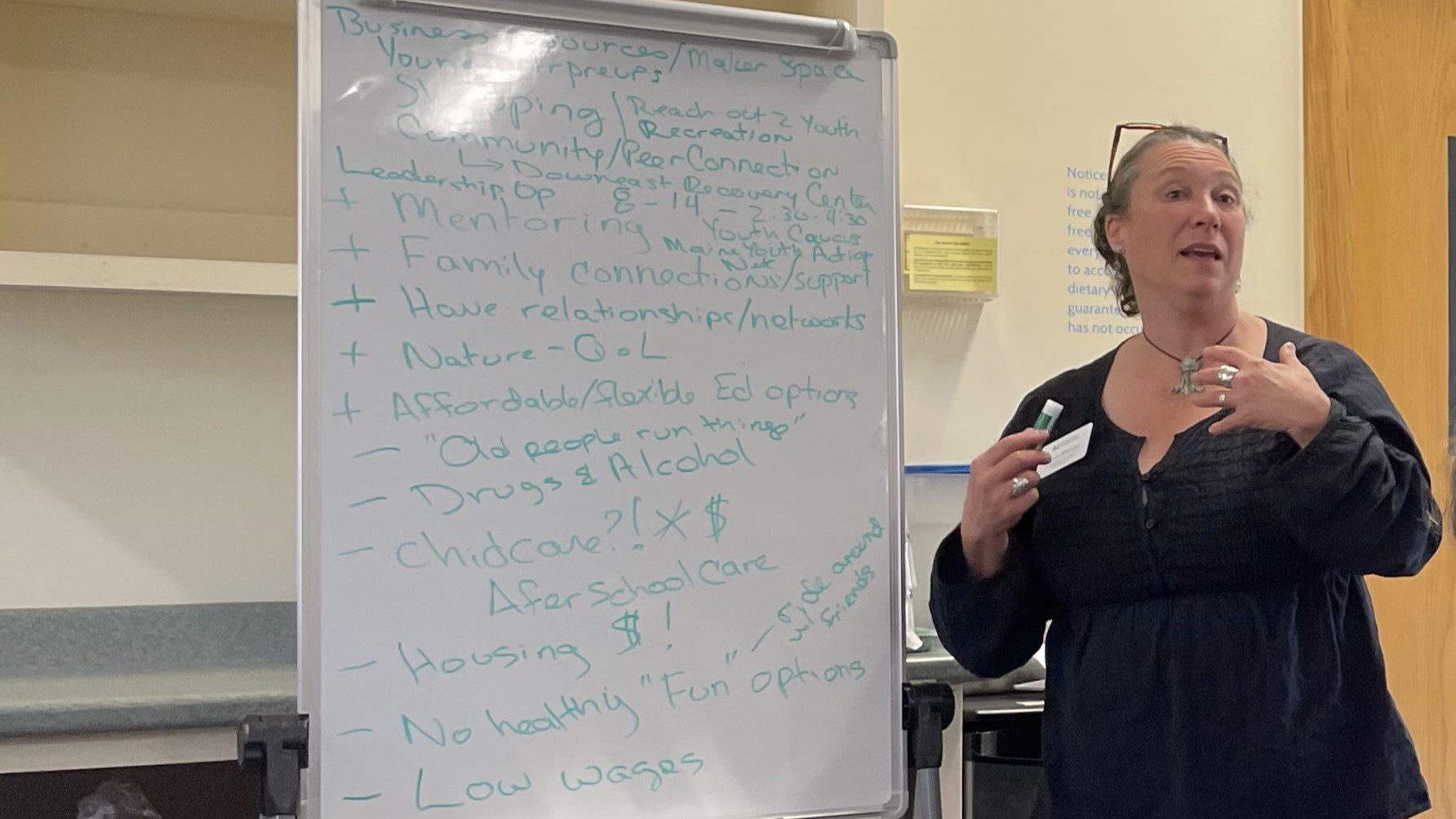
Although their efforts to remain in Washington County have been more successful, the three panelists, in their early 20s to early 30s, told the audience they faced many of the same struggles. They agreed it hasn’t been easy and is often still a challenge.
Dayana Ortiz Garcia, who works for Mano en Mano in Milbridge, which provides support to immigrants and farm workers in Maine, said she’s had to weigh her options. She said she has family support and affordable college options in Washington County, but the high cost and shortage of housing is making her think twice about staying.
“That’s definitely something that has made me see like other areas, and it’s made me consider heading off to a different place,” she said.
Jillian Taylor has had challenges of her own. Although she now owns a marketing business in Machias, the leap only came after a staggered career path that first took her to college in Boston. Taylor vowed never to return to live in Downeast Maine, but during a visit fell in love with a lobster fisherman and married him, so she reluctantly stayed.
“I was like, I gotta get out of here in order to be successful,” Taylor said. “And then I fell in love … and I was like, well crap, how am I gonna be successful now?!”
She knew the good-paying career options in the region were mostly in education, healthcare and banking, none of which were terribly appealing. But Taylor enrolled full time at the University of Maine at Machias to become a teacher.
Taking all of her courses online so she could also work to pay for school, Taylor still struggled with her career path. But a chance encounter with a Machias Savings Bank executive led her into marketing, work she was passionate about. So she changed her college major, graduated and got a job in marketing.
Life for Taylor and her husband was getting easier — until their children came along.
Taylor said childcare in Downeast Maine, if you can find it, is “holy smokes expensive.” Determined to be successful, she started her own marketing company, which gave her a more flexible schedule.
But that still didn’t solve all the problems. With her husband often out to sea, Taylor has to cut her workday short at 2:30 p.m. to get the kids off the bus.
“Clients are still calling me at 3 o’clock because everybody else is still working in the world, but I’m not because I do not have an after-school program at my school,” Taylor said.
Although Taylor had originally been keen to leave Washington County, she and her husband are sticking it out. She also teaches a marketing class at Machias High and is an instructor for Partners in the Entrepreneurial Pathways free courses offered at Washington County Community College in partnership with SCEC.
Taylor said she hopes to be a mentor for others, helping them make the right career choices from the start, and hopefully opting to stay in Washington County.
Growing up in the fishing community of Addison, Brooke Hachey never really thought about leaving Downeast. But she said trying to make a living has been an uphill battle, especially in her small community, where there were no real options for a good-paying job.
Hachey said she worked multiple jobs to make ends meet, beginning at age 14 when she started scooping bait at the lobster wharf. In high school she got her certified nursing assistant license, and after graduation added nursing home and home healthcare work to her grueling day and night work schedule to pay for college and child care. Then, even those options went away.
“The lobster wharf closed, the nursing home closed, and the lady I was taking care of ended up passing away,” Hachey said.
Fortunately, Hachey had just completed her degree and landed a job with the state. But Hachey said she still wasn’t making a living wage, or anywhere even close. Eventually she was able to secure a good-paying job at SCEC, where she is the connectivity program coordinator, helping Washington County residents access broadband, another crucial resource needed to keep young people Downeast.
For many Washington County young people on the verge of adulthood, planning a career path is not even part of the equation.
As teens, Hachey said she and her friends spent most of their time riding around in cars and drinking, sometimes with tragic results. In 2012, Hachey’s brother, who had been drinking, rolled his car on the blueberry barrens. Neither he nor any of his five passengers were seriously injured, but Hachey said it was a wakeup call for him. He decided he had to leave, so he enlisted in the Army.
“It was clear to everyone that he had a better chance (of staying alive) doing his two tours in Afghanistan than he had staying in Downeast Maine.”
According to Rucosky, the SCEC event moderator, car accidents are the second-leading cause of death among young people in the region after opioids. Without many afterschool programs and few nearby recreational options for young people, Rucosky and other community leaders say the often-lethal combination of substance abuse and “riding around” becomes the default choice for entertainment.
Recognizing the problem, the Downeast Recovery Support Center on Free Street in Machias has opened its doors from 2:30 to 4:30 p.m. Fridays for all young people, even those not dealing with substance abuse, creating a space there for them to gather. The center, which offers snacks, and an Xbox, has become like a community center within a recovery center, said Abby Frutchey, the substance use response coordinator for the Community Caring Collaborative, a nonprofit that helps coordinate 45 Downeast agencies.
The center has a twofold strategy of exposure to prevention and recovery supports for those impacted by substance use disorder, and being a space for youth to gather and “make it their own,” according to Frutchey.
She said young people say they want and need community, but not whatever kind of “community” the 40-year-old moms say is community, Frutchey added.
“They don’t want us ‘yukking their yum.’ They want a community space where they can be together without us old fogies, so they can relax and enjoy one another’s company,” Frutchey said.
People around the room nodded in agreement, including the young women who spoke on the panel and some high school students who ventured a comment. One student said a sense of community is more important to him when he graduates than finding one single, steady, living wage job. He said he’d be fine “bouncing around jobs” as long as he feels socially connected.
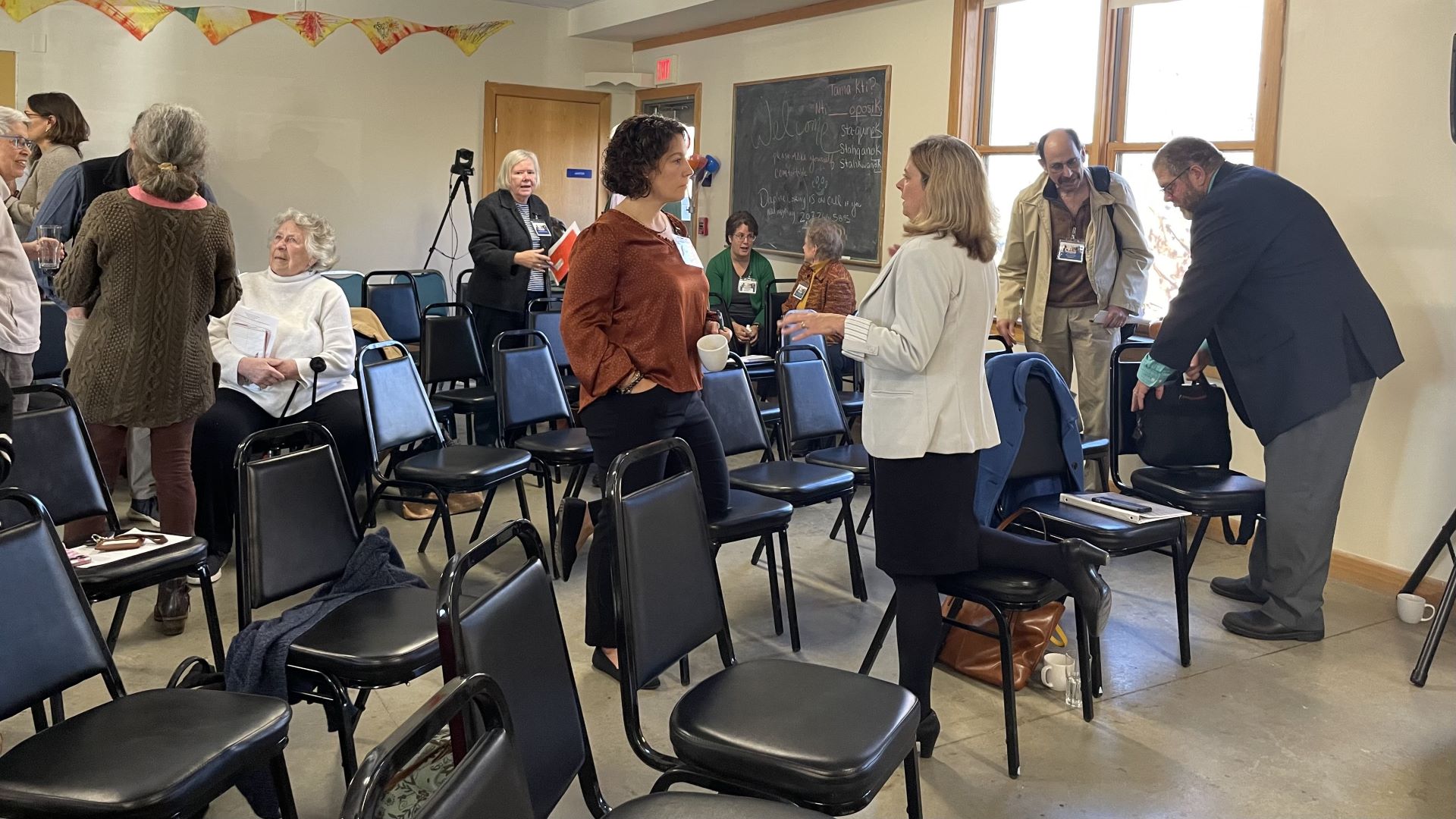
The Maine Integrated Youth Health Survey reports 44 percent of high school students don’t feel they matter. One consequence, according to John Zavodny, president of Maine Seacoast Mission, is that young adults shrink from participation in municipal government and leadership roles, further disconnecting from their communities.
The Mission recently held listening sessions, and was told by young adults that leadership is unappealing because “older people want us to do it, but they want us to do it their way.”
Another surprising finding, he said, was young people are also reluctant because leaders today are under the microscope.
“With social media, people are so critical and so negative. Young people don’t want to step into that space because it’s become a kind of target area,” Zavodny said.
A program just launched in northern Maine attempts to address that sense of disenfranchisement by connecting students with community leaders, and by creating peer-to-peer mentoring to develop leadership skills. The program, operated with assistance from the Helping Hands with Heart volunteer organization, involves all five school districts in the Maine Highlands region, including elementary, middle and high schools in Piscataquis, and parts of Somerset and Penobscot counties.
“We have adults from the community going in and talking about careers,” said Sue Mackey Andrews, the organization’s volunteer facilitator. “We’re working to do more of that intentional mentoring where we can actually match kids to maybe potential careers that they’re interested in, and then talk about how you make that work.”
The program, funded with $426,000 from a congressional district spending earmark through the office of Sen. Angus King, could be replicated in Washington County, according to Edie Smith, a regional representative for King. She said they will work with officials in Washington and other rural counties to help them seek funding.


